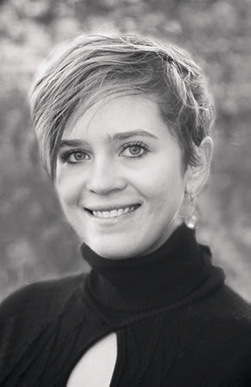In a natural ecosystem, such as a forest, nothing goes to waste. Every material that a living thing excretes or discards, and everything that dies or decomposes, becomes food or shelter for other organisms, allowing the cycles of life to continue.

Eva Gladek ’05
Major: Biology
Her company works toward an
economy that is waste-free and
regenerative by design.
Eva Gladek ’05 believes human cities and industries should work the same way. Metabolic, the business she founded in the Netherlands in 2012, promotes innovation toward a circular economy, “broadly defined as an economy that is waste-free and regenerative by design,” she says.
Take just one of Metabolic’s many ventures: De Ceuvel, an experimental Amsterdam office park that was featured on PBS NewsHour in May. Built on the site of a polluted and derelict shipyard, De Ceuvel now features office spaces made from retrofitted houseboats. Solar panels power the structures, and fish waste and human urine are collected and processed into fertilizer to grow herbs for the site’s café, whose popularity with tourists has surprised even the people who designed it; Gladek calls it a “hipster heaven” that, in the summer, attracts more than 1,000 visitors per day.
Metabolic has worked on some 400 other projects to date, consulting with businesses—including the Duracell battery company and Alpro almond drink producers—on how to become more efficient, sustainable and circular. And they do the same for cities. In 2017, they partnered with a delegation from Charlotte, N.C., to strategize ways in which thousands of tons of garbage that the city sends to landfills could be rerouted to create economic value and job opportunities—concrete and glass from demolition sites, for instance, can be recycled into new building materials. Gladek says there’s now an “Innovation Barn” under construction in Charlotte to showcase these ideas and provide training in circular entrepreneurship.



